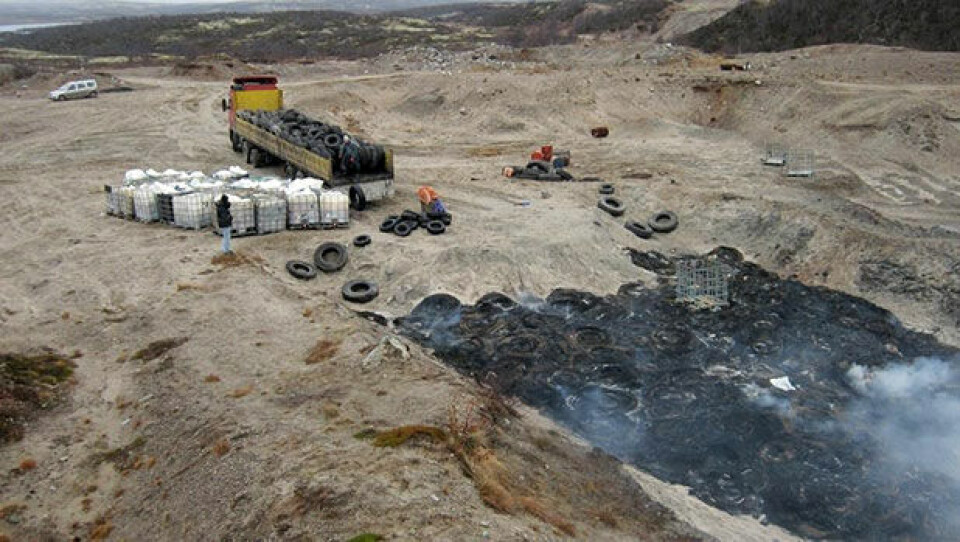
Murmansk salmon farmers buy Norwegian smolt company
Business tycoon Maksim Vorobyov and his Russian Aquaculture acquires Villa Smolt AS, a Norwegian company with license to produce an annual 5 million young salmon and trout fish.
p.p1 {margin: 0.0px 0.0px 0.0px 0.0px; line-height: 16.0px; font: 12.0px Times; color: #000000; -webkit-text-stroke: #000000; background-color: #ffffff}p.p2 {margin: 0.0px 0.0px 0.0px 0.0px; line-height: 16.0px; font: 12.0px Times; color: #000000; -webkit-text-stroke: #000000; background-color: #ffffff; min-height: 14.0px}p.p3 {margin: 0.0px 0.0px 10.6px 0.0px; line-height: 20.0px; font: 17.0px Georgia; color: #292929; -webkit-text-stroke: #292929; background-color: #ffffff}span.s1 {font-kerning: none}span.s2 {font: 17.0px Georgia; font-kerning: none; color: #a80e0f; -webkit-text-stroke: 0px #a80e0f}
The Russian company, which recently has been through a serious economic crisis, confirms that the acquisition of Villa Smolt is an important part of its development strategy.
«The company considers this deal an important step towards building an efficient vertically integrated holding», a press release reads.
«It will help the company adopt technology and valuable experience from Norwegian specialists with more than a ten year history and use this for construction of its own smolt factories in Russia».
The Villa Smolt reportedly has a license to produce up to five million smolt per year and the Russian buyers intends to get the first shipment of the baby fish in 2018. The Norwegian company is owned by Salmar ASA, one of the company’s biggest producers of farmed salmon.
The Barents Observer has not managed to get in contact with Villa Smolt General Director Bjørn Hembre for a comment.
Environmental scandal
The acquisition comes only two years after the Russian Aquaculture was on the verge of bankruptcy following mass death of fish and environmental mismanagement.

The company is believed to have lost about one billion rubles on the disaster.
According to the Russian Fishery Agency, as much as 20,000 tons of fish died in the Murmansk fish farms in the course of 2015. The second salmon breeder in the region, the Russian Salmon, in November 2015 declared itself bankrupt after major parts of its fish farms in the Pechenga Bay were ruined by disease and death.
Blame on the Norwegians
Paradoxically, representative of Russian Aquaculture, Ilya Bereznyuk, in late 2015 told a Russian newspaper that his company suspects that smolt from Norway is the source of the destructive disease. The company now considers to invest as much as four billion rubles in the development of its own smolt breeding facility, Bereznyuk said then.
While Russian Aquaculture presented Norwegian suppliers of smolt as scapegoats in the Murmansk salmon scandal, information from other sources indicate that the reason for the disease was serious mismanagement of the Russian fish facilities. As reported by Bloger51, the aquaculture farmers might have kept more than twice as many fish as allowed for in their cage nets.
Following massive fish death in one of its net cages, the Russian Aquaculture company in spring 2015 reportedly decided to cut loose parts of the cage bottom in order to ease the weight pressure. That resulting in the escape of a major number of farm fish into the local fjord.
The fjords so far used for fish farming by Russian Aquaculture are today considered unhealthy and the company is therefore moving into new suitable waters. According to the company website, it has now three farm sites in operation, all of them located on the eastern side of of the Fisherman’s Peninsula, not far from the border to Norway.

Powerful business interests
In 2014, the company expanded with salmon and that same year delivered 4,500 tons of salmon and 600 ton of trout to the market. The company is owned by Maksim Vorobyov, a businessman associated with Moscow Governor Andrey Vorobyov.
In 2016, increased its production to 5,300 tons and its net revenues to 2.1 billion rubles (€15.9 million), newspaper Vedomosti reports.
















